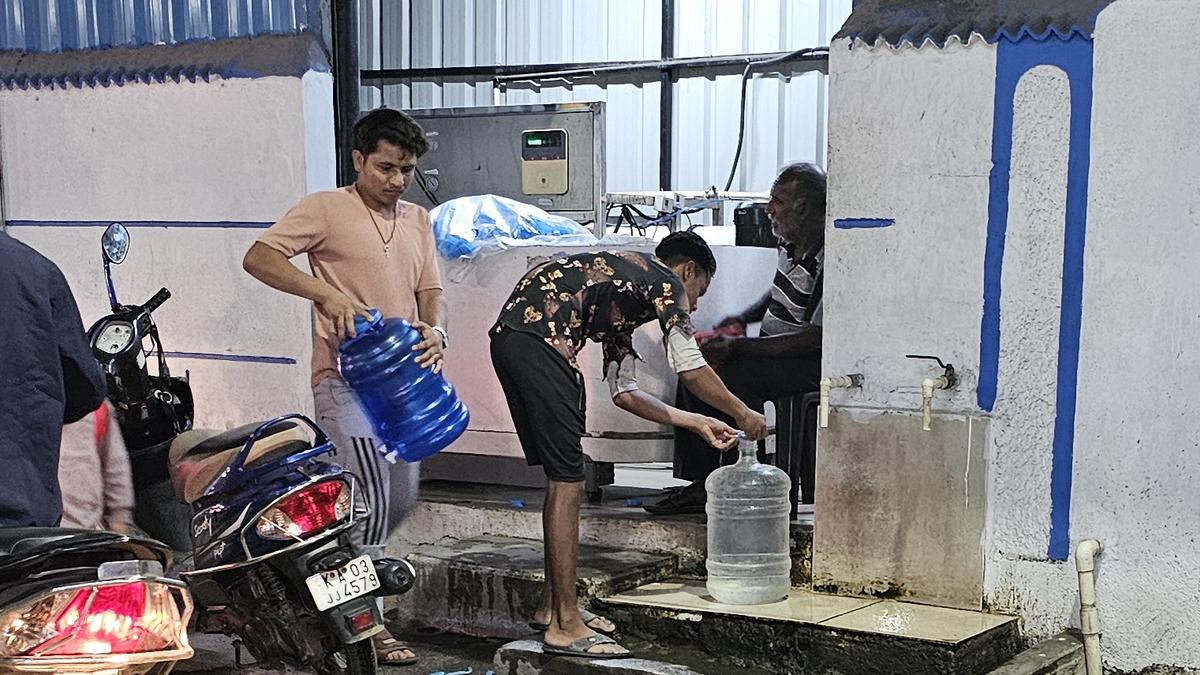
Drinking water contamination: A recurring nightmare in Bengaluru Premium
The Hindu
Is there no end to this recurring nightmare? As lakhs of Bengalureans cry out for an enduring solution that ensures supply of clean, safe drinking water, huge structural and systemic gaps remain unaddressed. Chaotic underground pipeline networks exasperated by a lack of coordination by multiple civic agencies, big gaps in ferrying sewage and treatment, absence of a prompt contamination alert system have all left the citizens precariously exposed.
Three hundred residents of the city’s BTM Layout faced serious health risks in November, in the latest episode of sewage inflow into Cauvery water lines. Two months earlier, the entire HBR Layout was perched dangerously close to a similar health disaster. No lessons were learnt from April of the same year, when water contamination had triggered a big, 40% spike in cholera cases across the city.
Is there no end to this recurring nightmare? As lakhs of Bengalureans cry out for an enduring solution that ensures supply of clean, safe drinking water, huge structural and systemic gaps remain unaddressed. Chaotic underground pipeline networks exasperated by a lack of coordination by multiple civic agencies, big gaps in ferrying sewage and treatment, absence of a prompt contamination alert system have all left the citizens precariously exposed.
In most cases, the contamination is detected only after the foul stench hits the residents. But by then, the damage would be done. In BTM Layout 2nd Stage, many residents had their entire sumps filled with 3,500 to 4,000 litres of Cauvery water turn black. Often, the citizens end up spending an enormous amount of money to entirely flush out the polluted water, clean the interior pipeline system and refill with tanker water.
The United Nations General Assembly has declared safe drinking water as a human right. Water, sanitation and hygiene (WASH) is one of the UN’s Sustainable Goal. Yet, the country’s wannabe global city has been found wanting year after year in periodical water quality assessment and surveillance, critical to guide action on safe drinking water.
The presence of the diarrhoeagenic bacteria called Escherichia Coli (E-Coli) is a clear indication of faecal contamination in drinking water samples. Counts of coliforms are an indicator of microbial contamination. But how frequently is the supplied drinking water tested for these critical parameters?
“Microbial studies are rarely done on water, since they are convinced that UV and chlorine will take care of all those pollutants,” says Ramprasad V., Co-founder, Friends of Lakes.
Recurring contamination can only be addressed through a scientific water safety plan, says independent water and wastewater consultant Thippeswamy M.N. “Contamination can happen anywhere from catchment to consumer. Though treatment happens at the headworks, pollutants can enter at the pumping stations, reservoirs and the 10,000 km plus pipeline network that carries water to the consumer,” he points out.













